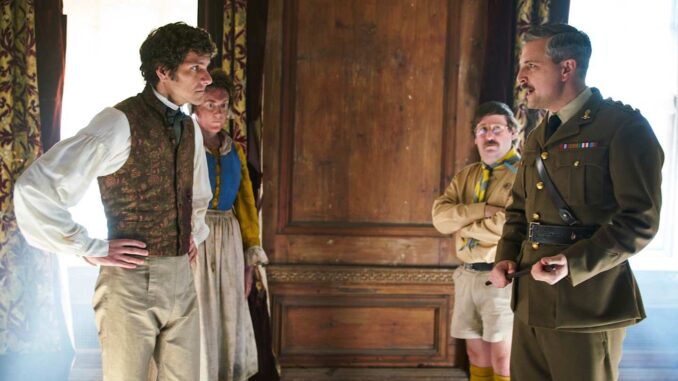
When British Ghosts Reveal the Truth About the Basement Hauntings
The British basement, a subterranean realm of forgotten things and earth-cool air, holds a unique place in the national psyche. It is not merely a foundation but a repository, a historical layer cake of discarded possessions, past renovations, and the faint, enduring scent of damp earth and coal dust. Yet, it is within these shadowed depths that the most compelling and often tragic truths about a property's history frequently lie, truths that are sometimes whispered, revealed, or even screamed by its most persistent residents: the ghosts. Far from being mere specters of terror, British ghosts, particularly those tied to the basement, often serve as reluctant archivists, their spectral activities a desperate, often poignant attempt to bring a long-buried reality to light.
The British basement, whether the sprawling cellars of a country manor or the cramped coal-holes of a Victorian terraced house, is inherently a place of concealment. It is where things were stored, hidden, or simply allowed to decay out of sight. Over centuries, these spaces accrue layers of silence and secrecy. They become palimpsests, each era leaving its mark, yet the deepest, most troubling narratives often remain etched into the very foundations, waiting for an unseen hand to reveal them. This is where the British ghost steps in – not always a terrifying apparition, but often a consistent, inexplicable anomaly: a chilling draft in a specific corner, the faint smell of tobacco where no one smokes, the sound of dragging chains or a child’s mournful crying emanating from below.
Consider the case of Blackwood Manor, a sprawling Jacobean pile in the Derbyshire Dales. For decades, the lowest level, a warren of stone cellars, was plagued by a pervasive sense of dread. Objects would move – a rusty spade shifted from one wall to another, an old barrel repeatedly rolled into the centre of a room. Cold spots were so intense they felt like physical entities. Locals attributed it to a general 'unquiet spirit,' but it was only when a structural engineer, examining a persistent crack, noticed an anomaly in the stonework of a particularly active corner. Behind a seemingly solid wall, a small, bricked-up recess was discovered. Inside lay a collection of tarnished silver buttons, a child's boot, and a yellowed parchment – the hastily scrawled will of a forgotten heir, disinherited and, as later parish records revealed, left to perish in the cold of winter, perhaps in that very hidden nook, by a greedy sibling. The shifting spade and rolling barrel, once seen as random poltergeist activity, became chillingly clear: the ghost of young Thomas, patiently, relentlessly, drawing attention to his hidden grave.
Another illustrative instance comes from a humble Georgian townhouse in Bristol, its small, cramped cellar reportedly haunted by the sound of faint, rhythmic tapping. Generations of residents had dismissed it as faulty pipes or the creaking of an old house. But the tapping was too regular, too persistent, too specific in its location. It seemed to originate from beneath a slate flagstone, distinctly different from the rough-hewn floor around it. When the current owner, driven by curiosity and a lifetime of uneasy nights, finally prised the flagstone open, she discovered not a pipe, but a small cavity. Within it, carefully preserved, was a small, ornate wooden box containing a bundle of coded letters and a miniature portrait. The letters, when deciphered, revealed a tragic tale of illicit love during the Napoleonic Wars, a young woman hiding communications from her French lover, a spy, in the cellar. Her phantom tapping wasn't malicious; it was the echo of her secret life, the frantic rhythm of her heart, waiting for her story to be acknowledged. The "truth" here wasn't a crime but a deeply personal history, kept alive by the spectral whisper of her enduring presence.
What these British ghosts reveal is rarely direct. They don't speak in clear sentences or hold up damning evidence. Instead, their revelations are a form of performative memory. They manipulate the environment, create sensory clues – the scent of old lavender, the clang of an invisible bell, the sudden, inexplicable chill that makes the hairs on one's arm stand on end. They direct attention, not through instruction, but through persistence and repetition, leading the living to the very spot where the truth is interred. The basement, in this context, becomes a liminal theatre, where the past can finally stage its unperformed drama, with the spectral residents as the enduring, if tragic, directors.
Ultimately, the phenomenon of British basement hauntings revealing hidden truths speaks to a profound belief in the enduring power of memory and the human need for resolution. These aren't just spooky tales; they are echoes of history, often of the forgotten, the wronged, or the simply unacknowledged. The cold stone, the deep earth, and the long shadows of the basement become unwilling custodians of these secrets, until a persistent British ghost, through its spectral dance, finally compels the living to listen, to investigate, and to unearth the truth, allowing both the spectral and the historical record to finally find peace.
